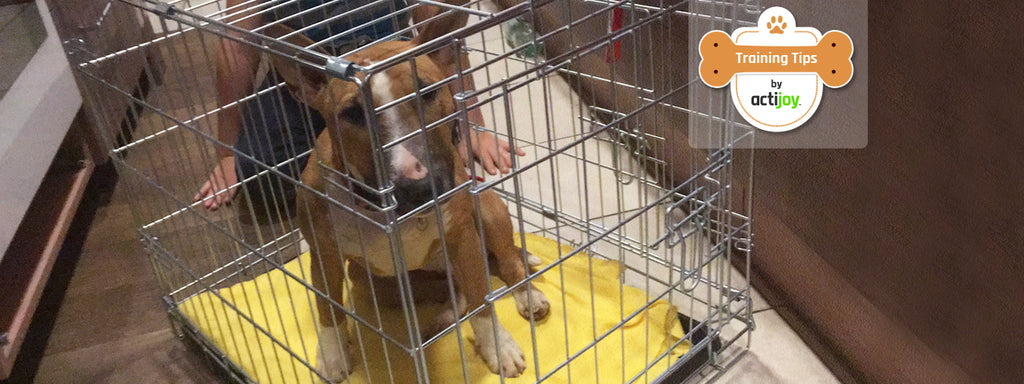To Crate or Not to Crate?

In this next series, we will discuss a common topic: crating. Should you crate your dog? What are the risks and benefits of this practice?
Furthermore, are you a bad dog owner for choosing to crate your pet? These answers – and more – will be discussed throughout the series.
Is Crating Cruel?
One of the most common misconceptions about dog crates is that they are cruel. However, just the opposite is true! Dogs are den animals, which means they crave cover in small spaces. In fact, when properly introduced to the crate, your dog is likely to feel safest there!
Pros of Crating
There are many advantages of crate training your dog. For instance, the best way to potty train a puppy is with a crate, as dogs inherently know not to soil their living quarters. Crates also keep your dog out of trouble in your house, while protecting your property from being chewed or eaten. If you have multiple dogs, crates help prevent fights and unsupervised playtime. Finally, crating your dog during travel is the safest way to transport your pet.
Cons of Crating
When a dog is properly conditioned to the crate and kenneled appropriately, there are no real disadvantages. In rare instances, dogs with severe separation or isolation anxiety may become destructive in their crates, which can lead to injury. However, pet owners can purchase destruction-proof crates that are designed to keep dogs with destructive tendencies safer than when left alone in the home. In other instances, pet owners may abuse the advantages of the crate and leave their pets in the kennel for too long a duration. Dog owners must always remember that the crate is not a substitution for proper training and exercise.
When Should a Dog be Crated?
Knowing when to crate a dog is an individual decision, dependent upon both dog and owner. A dog should be crated anytime the animal is safest in a kennel, such as during travel, when sick or injured, or when home alone (if destructive). During potty training, the crate can also be used anytime the puppy cannot be supervised. However, dogs should not be left in crates for durations longer than 4 – 6 hours at a time.
If you would like to learn more about crating, such as how to choose a dog crate or crate training your dog, subscribe to our blog!
Please note: all dogs should be treated as individuals. The Actijoy blog is for educational and entertainment purposes only. In case of emergency, always seek qualified health care from a local veterinarian or emergency facility. Actijoy blogs are not designed to treat, diagnose, or prescribe medication for your pet.



